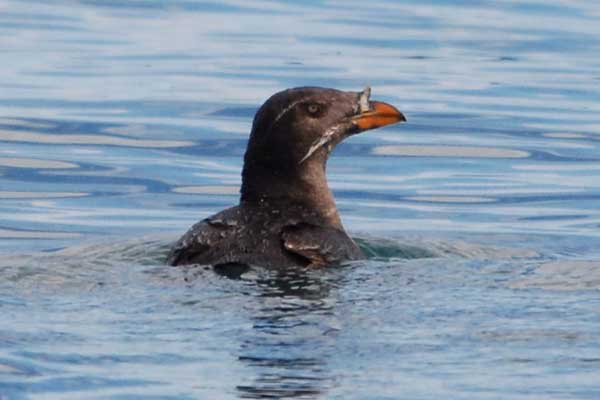Watch off the bow of the Washington State ferry to Port Townsend or the San Juan Islands, and you'll see this foot-long bird diving just in time to avoid collision. Named for the little vertical horn growing up from the base of its bill, the Rhinoceros Auklet, or "Rhino," lives along the North Pacific Coast from Japan and Russia to Alaska and south to California.
Bird watchers see the resemblance between the "Rhino" and its relative the Puffin in their black and white plumage and streamlined bodies. Each Rhino pair lays one egg at the end of a burrow 8 to 20 feet long. Rhinos use their bills and strong feet to dig these burrows in sandy soil, usually choosing a place where predators won't be a problem. West of Port Townsend, Protection Island has especially good conditions, and an estimated 17,000 pairs of Rhinoceros Auklets breed there.
Rhinos are master divers. During summer breeding season they spend every daylight hour diving for food. Going as deep as 180 feet for up to 2 minutes, they catch little fish, especially herring, sand lance, and smelt. At dusk, the auklets return to their nest burrows and feed bills full of fish to their single waiting chick.
The fish on which this bird depends are important food for many other marine creatures too. Sand lance and smelt lay their eggs on beaches. Herring attach theirs to eelgrass and other surfaces. Shoreline owners can make a big difference in the biological health of Puget Sound by managing their beaches well. For more information contact the Shore Stewards program in your area.

